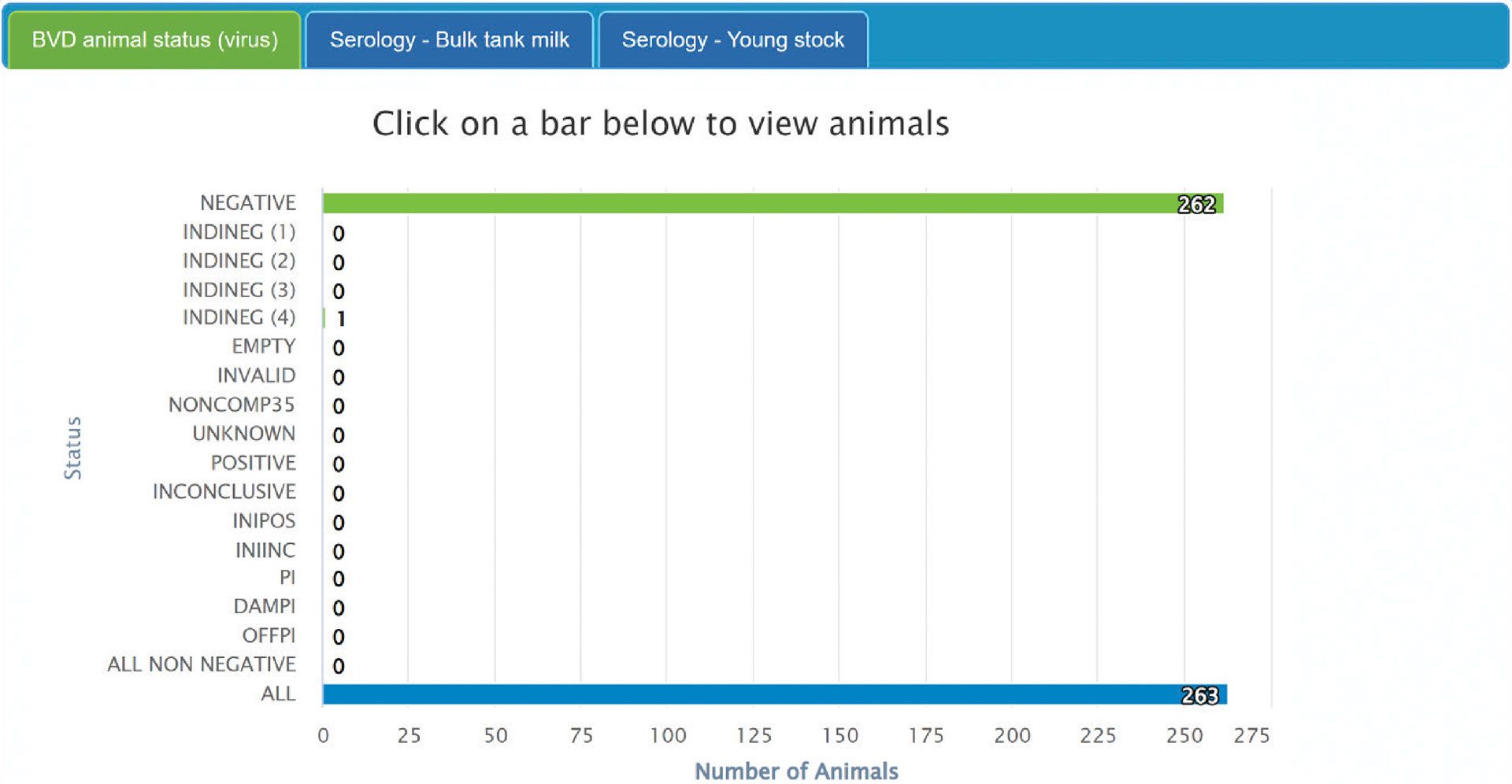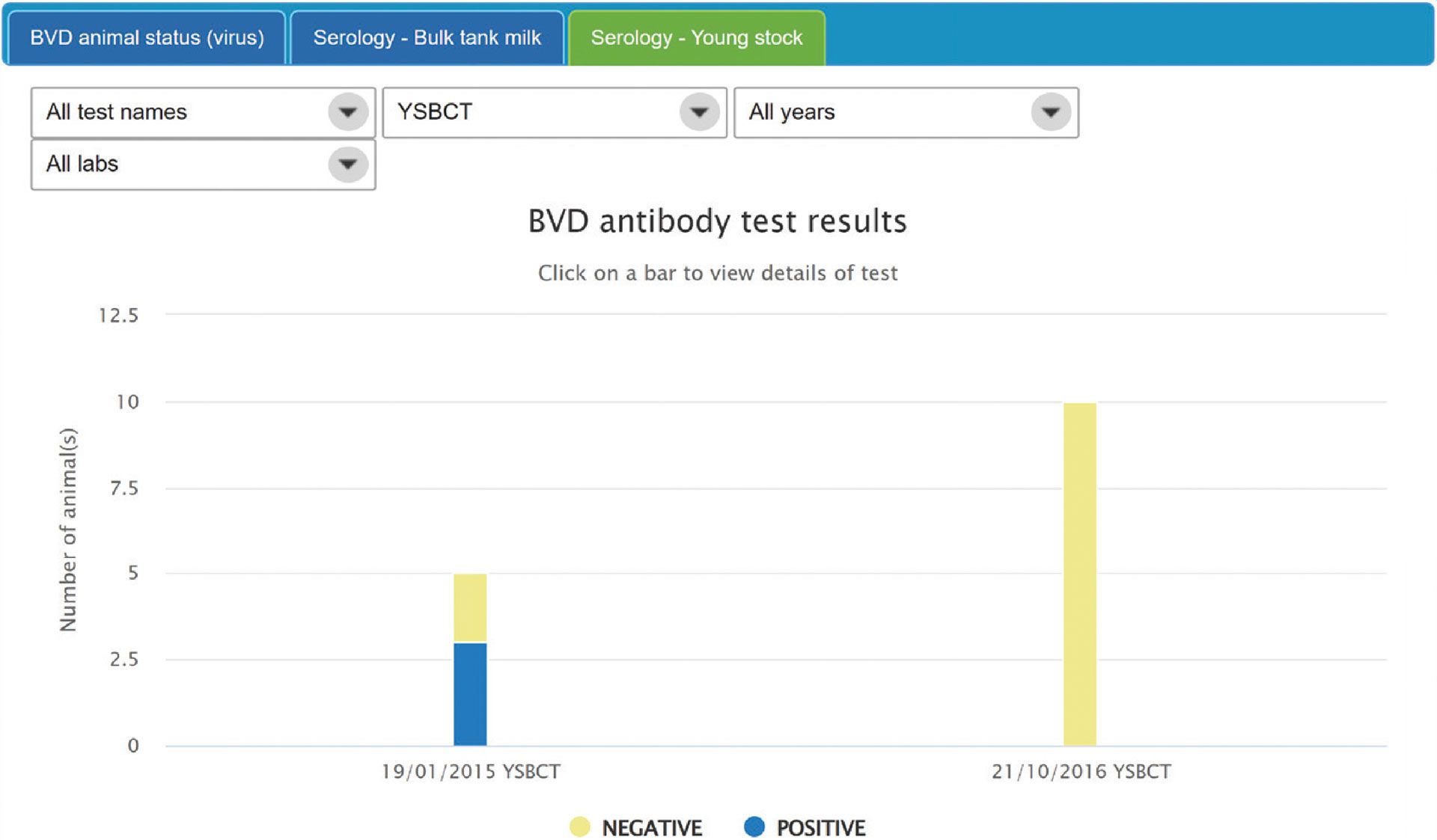Individual animal serology for monitoring herds for BVD
Disease control programmes rely on herd- or animal-level tests to determine the status of a herd, writes Dr Maria Guelbenzu LV PhD MRCVS and BVD Programme Manager with Animal Health Ireland (AHI). Two major diagnostic approaches are normally adopted within BVD control programmes. One focuses on the identification of persistently infected (PI) animals for removal from the herd through direct diagnostic methods targeting the virus or antigen. The other focuses on surveillance at herd level, usually applying indirect diagnostic methods that target antibodies to the virus. The Irish BVD programme has until now focused on the detection of virus in young calves
The BVD Implementation Group (BVDIG) introduced a series of enhancements to the programme in 2021 in order to progress to eradication and to align the programme with the new Animal Health Law (AHL). The AHL sets out the requirements for recognition of BVD programmes and BVD freedom at EU level for the first time. An application for recognition of the Irish BVD programme was submitted earlier in 2022 and the programme was officially approved on July 18.
This approval is a key milestone for the Irish programme and a prerequisite for applying for recognition for freedom. The BVDIG is currently considering options for post-freedom surveillance to ensure prompt case detection in what is likely to be a phased approach. It can be assumed that this phase will be a transition to herd level surveillance, which is commonly performed with antibody detection methods.
The detection of antibodies to BVDV is a useful tool for determining an animal’s immune status and previous exposure. A positive result in an unvaccinated animal will suggest exposure, with immunity generally considered to be life-long. In a pregnant animal, it also indicates the possibility that the dam is carrying a PI animal. A negative antibody result doesn’t confirm that the animal is naïve as it can also be persistently infected. At this stage in the Irish programme this is highly unlikely, but an antigen/viral detection test is required to exclude this possibility.
In samples from PI calves, BVDV-specific maternal antibodies may be detected and may also block the detection of viral antigens for up to 75 days, which may lead to false negative results during a period referred to as the ‘diagnostic gap’. In non-PI calves, colostral antibodies last longer and can be detected until the animals are around six to nine months old, depending on the quality of the colostrum and the amount received by the calf.
Antibody testing also can be used for the detection of transient/acute infection and, at herd level, for herd classification or monitoring within control programmes by testing bulk milk for antibodies or by testing a proportion of the youngest age cohort of animals that are old enough not to have maternally derived antibodies for BVDV antibodies (a check test).

Figure 1. BVD dashboard with the two new serology tabs.
Young Stock Check Test
Young stock check tests (YSCTs) are based on the high probability of seropositivity in a cohort when a PI animal is present, reflecting the high level of shedding by PIs (Houe, 1995). A YSCT consists of blood sampling five homebred, unvaccinated animals > 9 months old and testing them for BVDV antibodies. Animals should have been together in the group for at least two months. Where separately-managed groups are present, it is necessary to perform a YSCT on each group.
Failure to take the separate groups into consideration will reduce the sensitivity of the check test enormously as not all groups will have a PI animal present and, therefore, exposure to the virus will not be distributed across the groups evenly. In the Irish BVD programme, around 70 per cent of herds that have had a birth of a PI calf have a single PI. And a further 20 per cent have only two PI animals detected.
Interpretation of YSCT results
If all animals in a given group are antibody negative, the check test for that group is considered negative, consistent with the absence of contact with a PI animal in this cohort/herd. If one or more of the animals is antibody positive, this is possible evidence of exposure to the virus and the possible current or recent presence of a PI animal in the herd. However, antibodies may also originate from vaccination or maternally derived antibodies.
The YSCT Pilot 2022
A series of surveillance options are currently being considered as components of the post-freedom serological surveillance system. As part of this process, a young stock surveillance pilot is taking place during the autumn of 2022. It involves the sampling by trained BVD-TASAH vets of herds that are undertaking a TB test in September/October 2022. Only vets that have received ‘BVD Young Stock Training’ are able to participate.
The main aims of this pilot are to test the logistics for the implementation of young stock check test surveillance in dairy and beef herds, to commence the training and awareness for this type of BVD surveillance and to gain experience of the results generated and resolve any issues identified.
New displays for serological results in ICBF
New screens have been developed in ICBF to display serological results and will be available to both vets and farmers. Serological results will be displayed within the existing BVD dashboard (Figure 1), under the new serology-young stock (Figure 2) and serology-bulk tank milk tabs.

Figure 2. New display for the serology-young stock results.
Conclusions
YSCTs provide a way of monitoring herds for BVD. A key piece of information in order to correctly interpret BVD results is the vaccination history of the herds. This will become less important when freedom is achieved, as routine BVD vaccination will be prohibited.
González, A. M., Arnaiz, I., Yus, E., Eiras, C., Sanjuán, M., and Diéguez, F. J. (2014). Evaluation of long-term antibody responses to two inactivated bovine viral diarrhoea virus (BVDV) vaccines. Vet. J. 199, 424–8. doi:10.1016/j.tvjl.2013.12.005.
Graham, D. A., German, A., Mawhinney, K., and Goodall, E. A. (2003). Antibody responses of naive cattle to two inactivated bovine viral diarrhoea virus vaccines, measured by indirect and blocking ELISAs and virus neutralisation. Vet. Rec. 152, 795–800.
Houe, H. (1995). Epidemiology of Bovine Viral Diarrhea Virus. Vet. Clin. North Am. Anim. Pract. 11, 521. Available at: http://www.ncbi.nlm.nih.gov/pubmed/8581861 [Accessed November 9, 2016].
1. Persistently infected animals are:
A. Virus positive
b. Antibody negative
C. Young PI calves may be positive for antibodies for a period of time due to maternally derived antibodies
D. All of the above
2. A positive BVD antibody test (whole virus or p80) in an animal could indicate:
A. Exposure to the BVD virus
b. Maternally derived antibodies in young calves (including PI calves)
C. Foetal infection in the last trimester of pregnancy
D. Possibility of carrying a PI calf in pregnant dams
e. All of the above
3. A young stock check test will consist of:
A. Sampling randomly selected animals
b. Sampling five young, homebred, unvaccinated animals from each separately-managed group
C. Sampling animals independently of their vaccination status
D. Sampling a single young stock group per herd
4. What is the proportion of herds with virus-positive results that only have one virus-positive animal detected?
A. 40 per cent
b. 60 per cent
C. 70 per cent
D. 90 per cent
ANSWERS: 1D; 2D; 3B; 4C.









